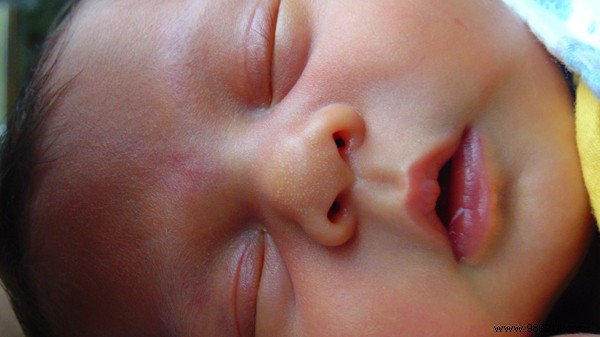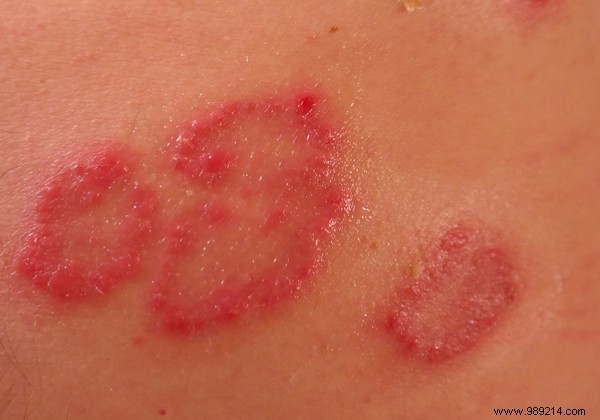
Many mothers will probably not contradict me:at one time or another, a newborn suffers at least once from a mild skin problem.
Here are the three small dermatological sores most encountered in infants and babies .
Nothing more unsightly and unsightly, isn't it, than milk crusts that scale on the skin of the little piece of cabbage. Dry or wet, these ugly plaques, generally yellowish in color, also sit on the most visible parts of the child's body, namely the entire head, forehead, eyebrows and especially the fontanelles.
For the most severe cases, it even happens that these crusts cover the body and the limbs. And if this skin problem has inherited this name, it is because these dermatoses have the color and appearance of curdled milk. But already, very good news, this temporary inconvenience will have no impact on the health of the baby, since it is usually the signs of oily skin. Nevertheless, these plaques may be irritating and therefore particularly unpleasant.
In any case, the thing not to do is to scratch them with your fingernails in order to remove them. It will only make the situation worse. Fortunately, these days, there are baby shampoos specifically suited to scalps with cradle cap. Otherwise, there is always the essential sweet almond oil to apply to the affected areas after the bath. A simple petroleum jelly will also do the trick.
Also commonly called atopic dermatitis, eczema is often the manifestation of an allergy. And when one or both of the parents suffer from it, the child is generally not spared. In little ones under the age of twelve months, these rashes appear on the elbows, neck, face, earlobes, or even the knees.
They are often due to a food intolerance, for example to lactose, gluten, or eggs. But it may also be a dermatological reaction to contact with an allergen such as animal hair, pollen, laundry products... Atopic dermatitis is manifested by whitish scales or small red patches that often go unnoticed at first. However, if the child scratches regularly on the risk areas, these are already the signs of eczema.

At the first signs, the thing to do is to go without further delay to the pediatrician. Indeed, the itching can quite simply disturb the child's sleep, especially during flare-ups. Only the latter can indeed decide on the appropriate approach depending on the degree and severity of the atopic dermatitis. The prescription normally includes emollient creams and topical corticosteroid ointments.
Eczema is very often also a physical manifestation of a psychological problem such as an annoyance or discomfort:in this case, it is better to remedy this first, and the eczema will disappear on its own.
Among these three skin problems, diaper rash is the most encountered since one in three children is affected. This skin irritation triggering lesions and redness occurs very early and lasts throughout the first year. The main causes of diaper rash are the prolonged contact of the sensitive and fragile skin of the infant with urine and feces in a particularly hot, but above all humid environment, linked to the airtight sides of the diapers.
However, it could also be due to prolonged diarrhea, poor hygiene, excessive use of wipes, or candida, an infection caused by fungi. Diaper rash particularly affects the folds of the buttocks of babies, as well as the genitals. Be careful, as soon as the problem is detected, you must react quickly.
Indeed, it is very painful and difficult to bear for infants, especially if the lesion is accompanied by cracks. And the first thing to do is to disinfect the affected area well with warm water and Marseille soap. Dry with a very soft towel, dabbing gently, before using the zinc oxide cream. Ideally, he should only be put in cotton diapers. Finally, change baby as soon as he does his business.